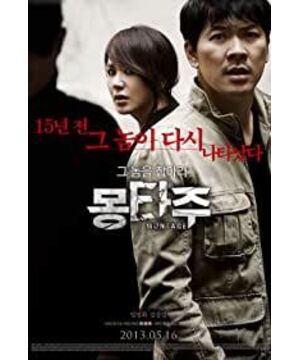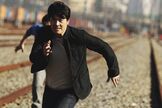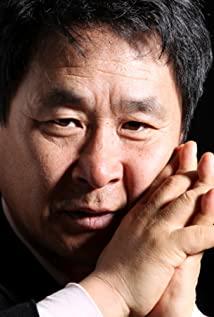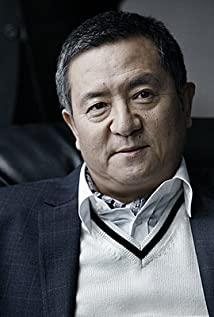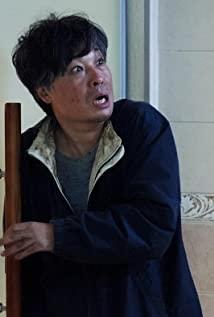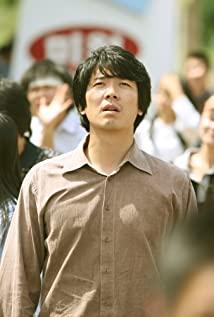If you haven't seen the movie, don't read any movie reviews/short reviews first
If you haven't seen the movie, don't read any movie reviews/short reviews first
If you haven't seen the movie, don't read any movie reviews/short reviews first
It was so painful that I looked at other short reviews before watching the movie, and the experience lost a lot.
But because of this, I can also more carefully appreciate the shock of the chaotic timeline and interspersed narrative used by the screenwriter and director's cut. The perfect combination of montage and content: the two criminals are the relationship between the victim and the perpetrator, and montage happens to be an important way to confuse the audience. If part of what A did is grafted to B, then the audience will would think that this is what B did. This is also the charm of montage.
Let's repeat the three timelines:
mother looking for prisoner
Xiaochun kidnapping case
criminal kidnapping
All mixed cuts, interspersed with narrative, giving the audience a deadly fog: the kid kidnapped by the man in black turned out to be Xizhen. When Xiaochun was kidnapped, his mother had already found out that his grandfather was the murderer. When the police were looking for Xiaochun's whereabouts, they inserted black. The paragraph where the man in clothes escapes.
Because in all the timelines that describe the kidnapping of children, there are people in black (and male figures), when you think it is the current time and space (Xiaochun), it is actually 15 years ago. ), when you thought it was the mother who deliberately pretended to be a prisoner, she appeared generously in other places to track down the clues, and it turned out that in the Xiaochun case, she almost never appeared in black clothes.
This creates a double fog:
On the surface, the prisoner from 15 years ago reappeared to commit a crime. The men in black who appeared throughout the whole process were all male, but the audience would immediately think that the plot should not be so simple, so they would be guided by the screenwriter to guess, yes. Wouldn't the prisoner be an unwilling mother? Because after the police told the mother that the case was invalid, the scene of the man in black robbing the car immediately appeared. It is easy to think that the mother was imitating the criminal's tricks.
So we were led away - the first "montage": the mother traced the clues 15 years ago, and pretended to be a prisoner to lead the police to trace.
But when the story went on, we discovered that the phone call after the mother traced the clues was the call that Wu Qinghao received on the day of his resignation.
The plot happened in different time and space, and the director made us think that it happened in the same time and space - maximized the ability of montage to manipulate time and space, and further deepened our speculation: that is, the mother imitated the crime.
The second reversal next is the scene where Grandpa Xiaochun is wrongly accused of being a criminal. We will be led by the screenwriter like Wu Qinghao: no matter what, it proves that Grandpa Xiaochun is not a criminal.
Until the sound of the recording was compared, all the fog was solved, but it was reasonable: in the absence of forged evidence by the police, the sound played on the tape was exactly the same as Grandpa Xiaochun's voice - using the tape as a criminal voice - conclusive evidence to prove that Grandpa Xiaochun Twice offender (without her voice, perfect for clearing suspicion) -- the voice is messed up because the tape is old and worn -- Mama Sizhen's tape is worn out - Mama Sizhen is the mastermind.
The logic is perfectly matched. In such a complex multi-space-time narrative, not only is there not a little bit of superfluous nonsense / branch lines / irrelevant plots, but all the links are correct, whether it is presented in three time-spaces at the same time, or when the audience is one After the article is cleared up as a separate plot, there is almost no place for drama.
Every place that takes up time is not a useless plot. The traces of Xiaochun's mother's operation and the tapes were damaged by careless police. This seems to be just a plot that fits the scene at the time, but it all becomes a foreshadowing later.
The only little awkwardness is that in the early stage of the story, Grandpa Xiaochun's skills are too strong and his movements are too agile. But this is also one of the fog circles: the prisoner may be a young adult.
In the end, all the acting skills were all online. After Grandpa Xiaochun saw the portrait of the prisoner 15 years ago, the moment he raised his eyes, it changed immediately.
Looking at this film in 2020, it is still the best-known work. It is neither old-fashioned nor outdated, and it is not easy to copy and copy (especially not easy to be copied by domestic cottages). Montage techniques, the difficulty is TOP level. The big directors disdain plagiarism, and the small directors do not come to copycats hhh.
View more about Montage reviews


